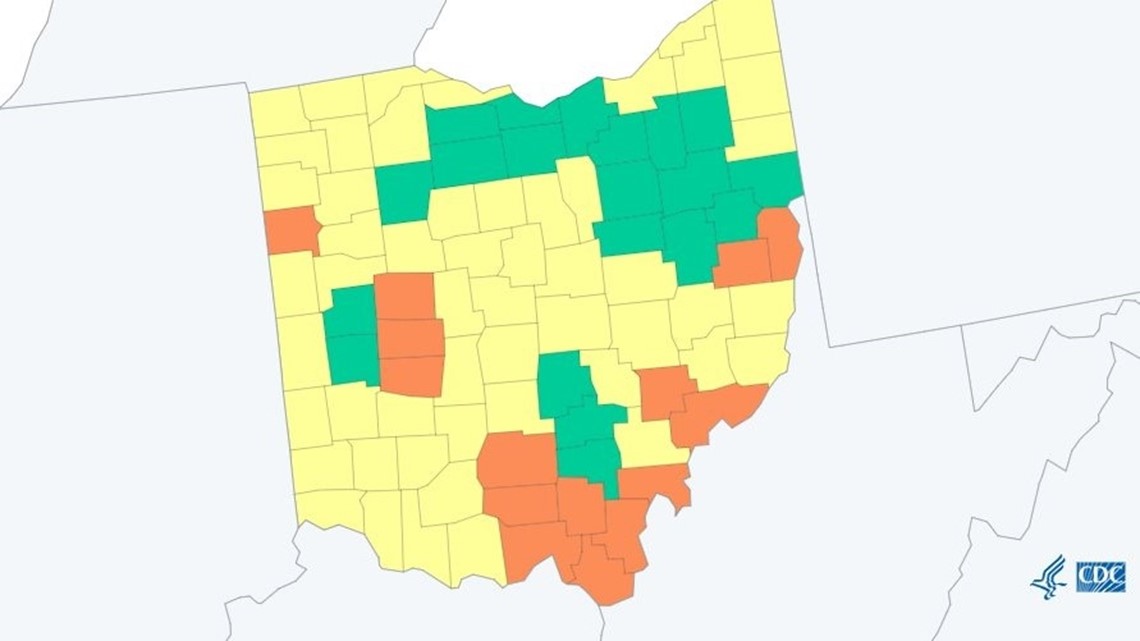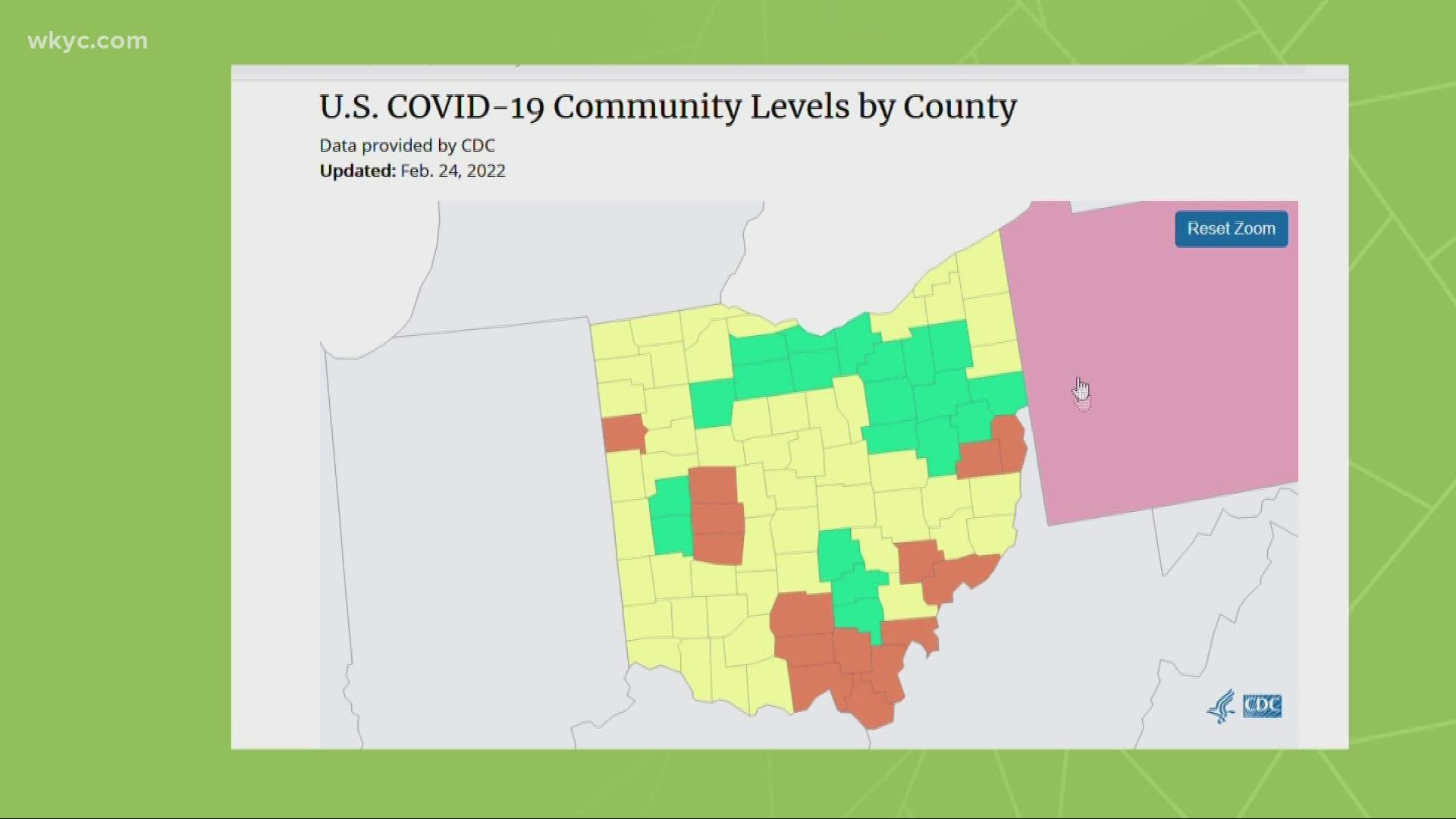CLEVELAND — On Friday, the Centers for Disease Control and Prevention (CDC) outlined new pandemic guidance that calls for a break from wearing masks.
The CDC revealed a new color-coded map — with counties designated as orange, yellow or green — to help guide local officials and residents. In green counties, local officials can drop any indoor masking rules. Yellow means people at high risk for severe disease should be cautious. Orange designates places where the CDC suggests masking should be universal.
The criteria for orange, yellow, and green is based on new COVID-19 hospital admissions, the share of staffed hospital beds occupied by COVID-19 patients and the rate of new cases in the community.
So how does that guidance affect Ohio? No county in Northeast Ohio is currently considered high risk. Here are the 15 counties in the Buckeye State that are orange:
- Champaign
- Clark
- Gallia
- Harrison
- Jackson
- Jefferson
- Lawrence
- Logan
- Meigs
- Morgan
- Pike
- Ross
- Scioto
- Van Wert
- Washington


The CDC says more than 70% of the U.S. population live in counties where the coronavirus is posing a low (green) or medium (yellow) threat to hospitals. Those are the people who can stop wearing masks, the agency said.
“Just because the recommendation is that people can now take their masks off indoors, doesn’t means you have to,” Dr. Kenneth Remy of University Hospitals Rainbow Babies and Children's Hospital told 3News' Sara Shookman. “If you would prefer to keep a mask on, undeniably you will protect yourself likely from spread of not only COVID disease, but also from other viruses.”
Additionally, the CDC said masks are no longer necessary on buses or vans that are operated by public or private school systems. That includes early care and child care programs.
The new recommendations do not change the requirement to wear masks on public transportation and indoors in airports, train stations and bus stations. The CDC guidelines for other indoor spaces aren’t binding, meaning cities and institutions even in areas of low risk may set their own rules. And the agency says people with COVID-19 symptoms or who test positive shouldn’t stop wearing masks.
The Associated Press' Zeke Miller contributed to this story
Previous Reporting:

